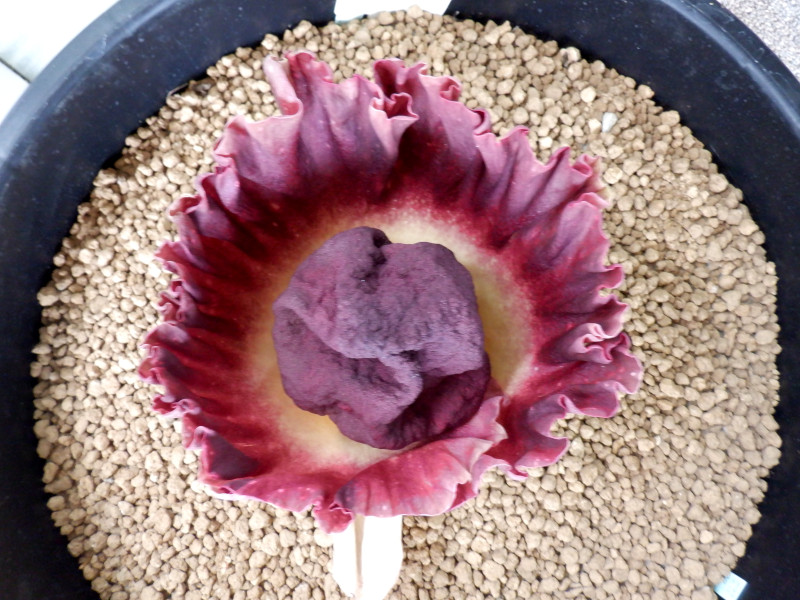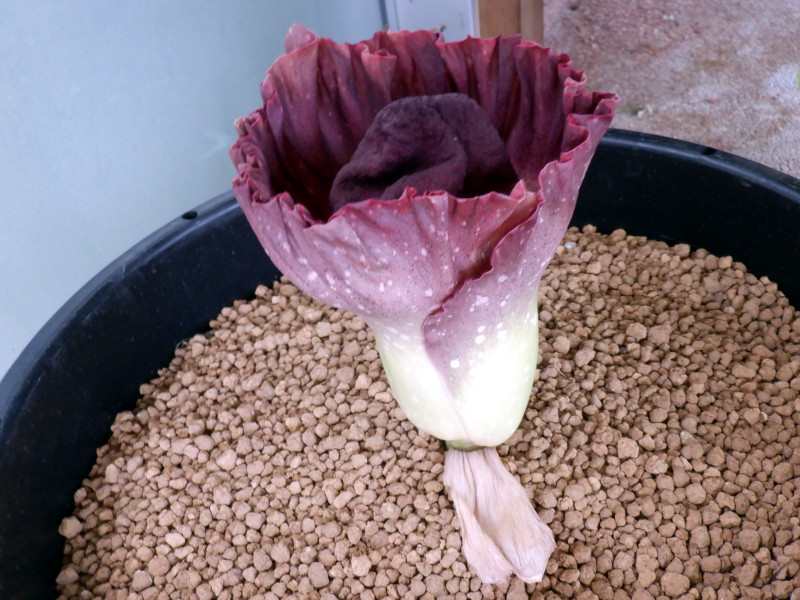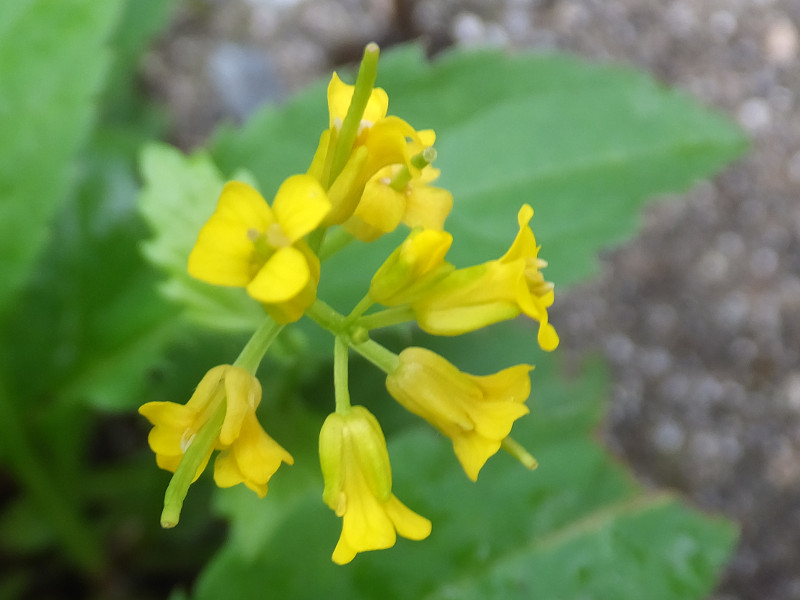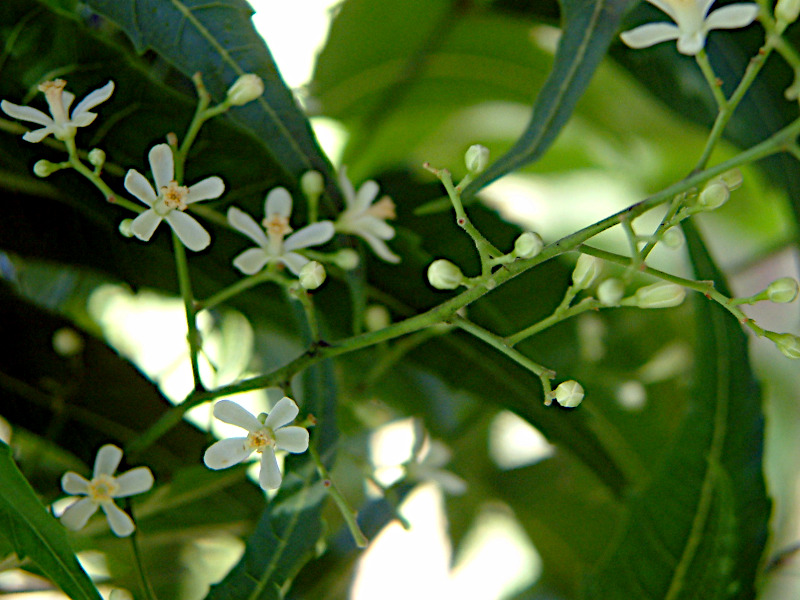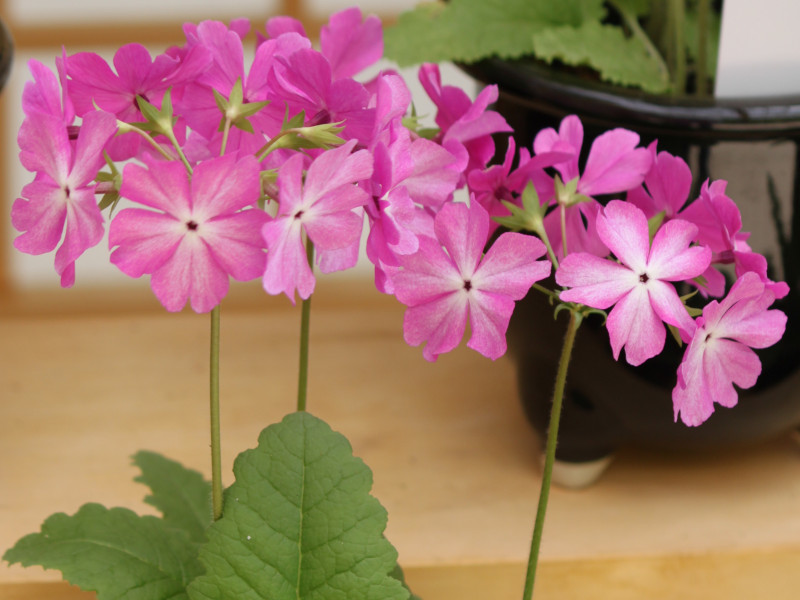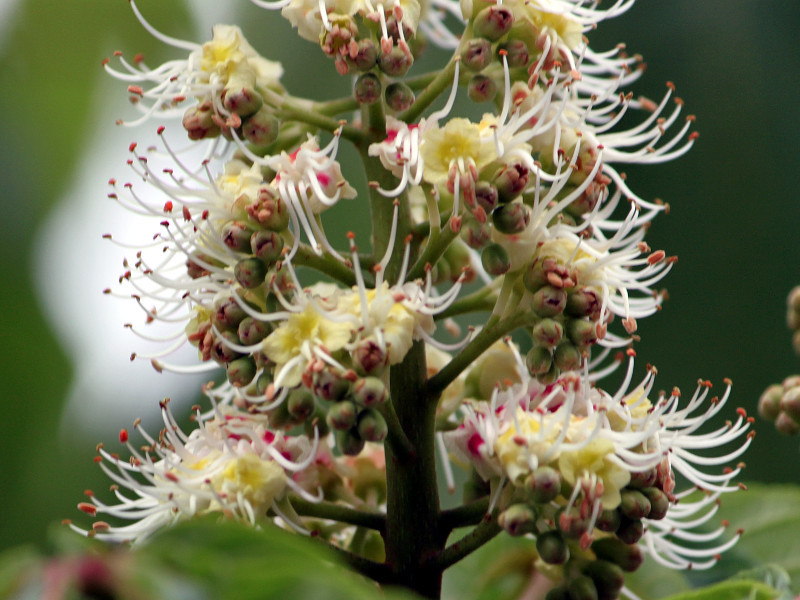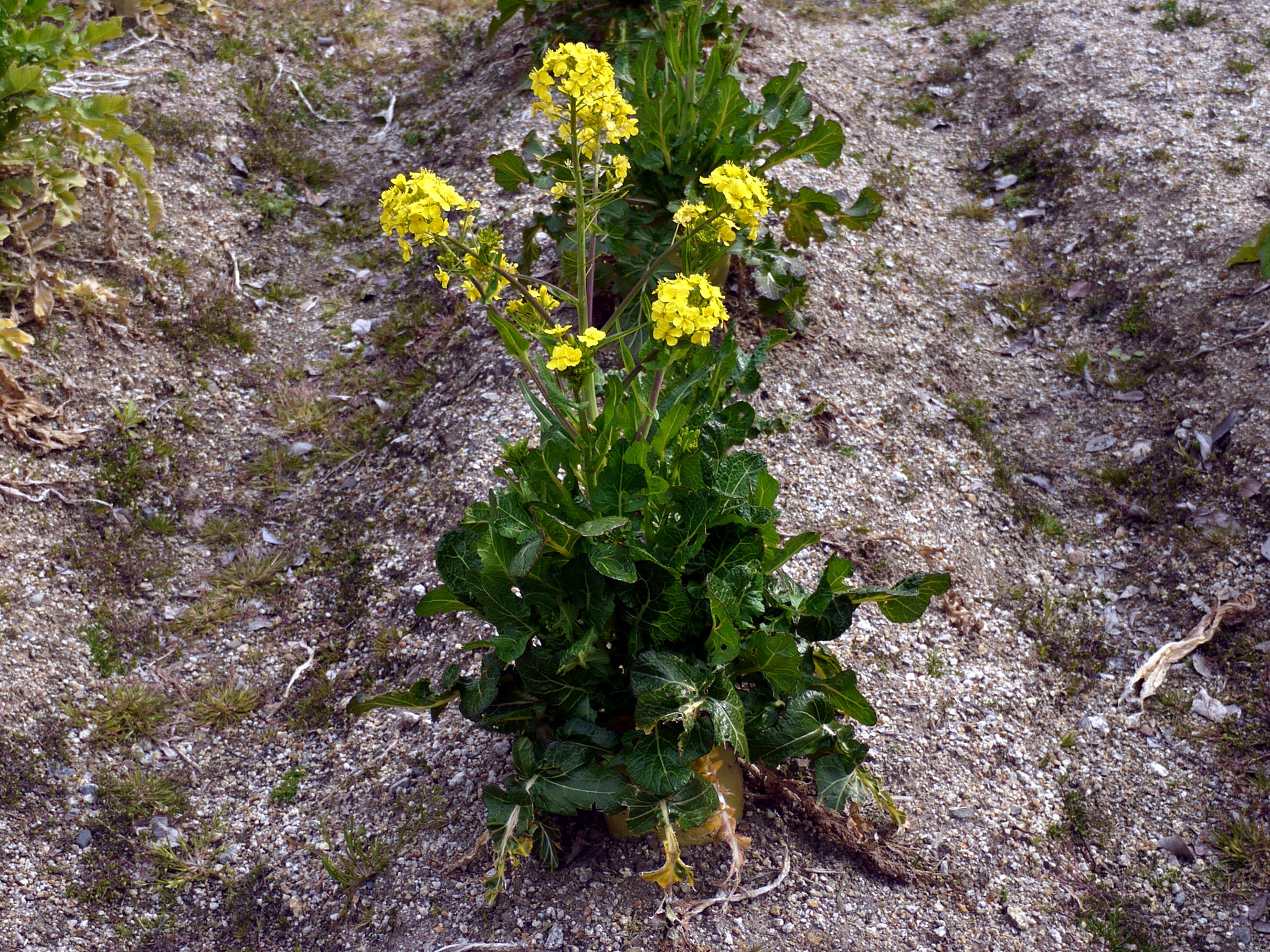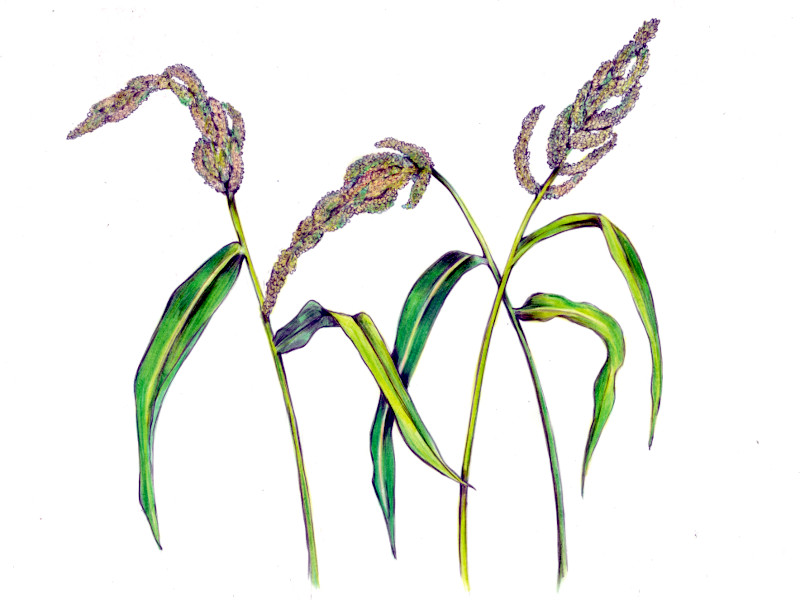Amorphophallus paeoniifolius
The size of the flower world's best and rare flowers of Indonesia (the national flower)
- Flower nameAmorphophallus paeoniifolius
- Scientific nameAmorphophallus paeoniifolius
- Alias象蒟蒻, Elephant yam, Elephant-foot yam, whitespot giant arum, stink lily, 臭魔芋
- Place of originIndia and the Indochina Peninsula
- Place of floweringSubtropical region, Specific area
- Flowering seasonApril, May
What is Amorphophallus paeoniifolius
Amorphophallus paeoniifolius ,commonly called as elephant yam, elephant-foot yam, whitespot giant arum, stink lily (scientific name: Amorphophallus paeoniifolius) is a perennial herb of the genus konnyaku in the taro family, native to India and the Indochina Peninsula. When it flowers in spring, the brownish-purple cap-shaped appendage on the fleshy inflorescence emits a strong carrion odor in order to attract flies and other insects to help pollinate the plant. It is cultivated in Southeast Asia because starch can be extracted from the potato.
No leaves are produced during flowering, and the plant dies after flowering. The potatoes are highly toxic due to calcium oxalate, so they cannot be eaten raw, but are processed and eaten after the toxin has been removed. Since it does not contain mannan, it does not become plump like Japanese konjak.
Amorphophallus paeoniifolius , an unusual flower
The inflorescence of the konjak is a fleshy, drooping inflorescence, with a large floral bract covering the central fleshy inflorescence and appendage. The floral bracts are modified leaves.
The fleshy drooping inflorescence of elephant konjac is a light grayish-pink, low, flattened, spreading "butsudare bract" surrounded by a misshapen, brownish-purple, cap-like appendage and a stick-like substance below it. In spring, numerous small yellowish-brown flowers are produced around the inflorescence.
Male flowers with only stamens are produced at the top of the inflorescence, and female flowers with only pistils are produced at the bottom. Neither the female nor male flowers have petals. When the flowers open, the appendages on top emit a foul odor that attracts flies and gold beetles, which serve as pollinators. No leaves are produced during flowering, and the plant dies after flowering. The potatoes are highly toxic due to calcium oxalate, so they are not eaten raw, but processed and eaten after the toxin is removed. Since it does not contain mannan, it does not become plump like Japanese konjac.
Amorphophallus paeoniifolius leaves
A single petiole (stem) grows from the tuber and divides into three at the apex, each with a large pinnate leaf.
Recycling of Amorphophallus paeoniifolius
Plant a potato in April → (leaves open in summer → begin to wither in December → leaves wither) → wait 3 or 4 years → flower buds open.
Origin of the name "Amorphophallus paeoniifolius"
It is called Elephant yam or Elephant-foot yam because the shape of the potato (tuber) resembles an elephant-foot.
Scientific name of Amorphophallus paeoniifolius
The genus name "Amorphophallus" is a compound of the Greek words "amorphos" (amorphous) and "phallos" (phallus, penis), from the shape of the drooping inflorescence. The species name "paeoniifolius" is a compound of the Greek words "paeonii" (peony) and "folius" (leaf), meaning a leaf like a button.
A member of the family Amorphophallus
Amorphophallus titanum
Amorphophallus konjac)
ゾAmorphophallus paeoniifolius
Amorphophallus johnsonii
Common name: Amorphophallus johnsonii, scientific name: Amorphophallus paeoniifolius, English name: Elephant yam, Elephant-foot yam, whitespot giant arum, stink lily, Chinese name: Amorphophallus johnsonii, place of origin: India - Indochinese peninsula, Southeast Asia, Habitat: Perennial summergreen herb, Tuber: flat, circular, Height: 1-2 m, Stem length (petiole length): 1 m, Stem color: green with white spots, Stem diameter: 7 cm, Leaf color: light green, Leaf shape: pinnate, lobate, leaf margin: serrate, Leaf length: 1.5 m, Leaf width: 1.5 m, Leaf width: 1 m, Leaf width: 1 m, Leaf width: 1 m, Stem color: green with white spots, Leaf color: light green, Leaf shape: pinnate (bird's-foot shape), lobe shape: small leaf margin: serrate; corolla shape: fleshy inflorescence; floral bract shape: funnel-shaped; floral diameter (diameter of floral bract): 30 cm; inflorescence height: 40 cm; appendage: reddish brown with a putrid odor; flowering season: April to May; fruit type: liquid fruit; uses: tubers for starch, young stems for vegetables; Amorphophallus flower language: "flexible".
